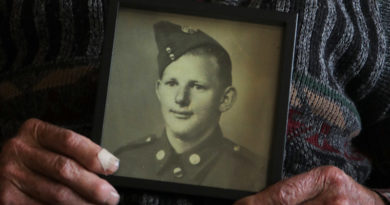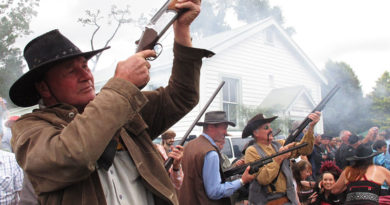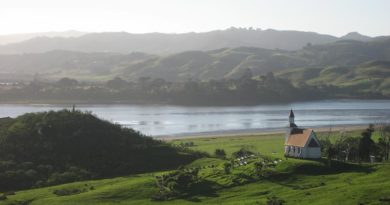‘We can hear ourselves think again’: Stillness descends on Mangamuka as highway closes for the second time in two years
For residents in a small Northland town life has come to mimic Groundhog Day, a movie in which the main actor is trapped in an endlessly repeating cycle of events.
Two years ago a massive slip in Mangamuka Gorge closed State Highway 1 for a year.
Overnight Mangamuka was transformed from a busy stop on the Far North’s main freight route to a sleepy backwater on a dead-end road.
A little over 400 days after the highway reopened, Mangamuka residents find themselves in precisely the same situation.
This time the gorge road has been ripped apart by at least 18 slips triggered by the deluge of August 18-19, 2022.
The closure has been greeted with stoicism, weary resignation and irritation, but also by appreciation of the stillness that has returned to the forest-ringed town.
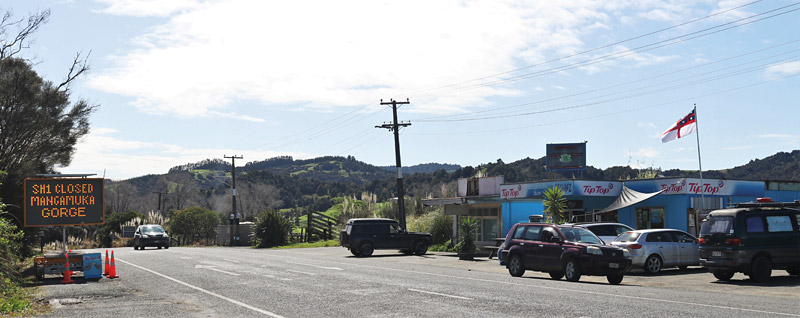
Cyril Chapman, who heads Mangamuka-based iwi radio station Tautoko FM, says Kaitaia is normally locals’ main shopping and service town. Many Mangamuka residents also have jobs and family connections in Kaitaia.
With the gorge road closed they have to drive the long way around via the narrow, slip-prone road through Broadwood and Herekino, or travel to Kaikohe and Kerikeri for supplies.
“Lots of people go through Herekino which takes at least an hour extra. Many have established networks in Kaitaia. Humans are habit-forming creatures,” Chapman says.
Locals are still recovering from the effects of the Covid pandemic and the 2020-21 closure, so the official description of the latest closure as “indefinite” doesn’t fill them with confidence.
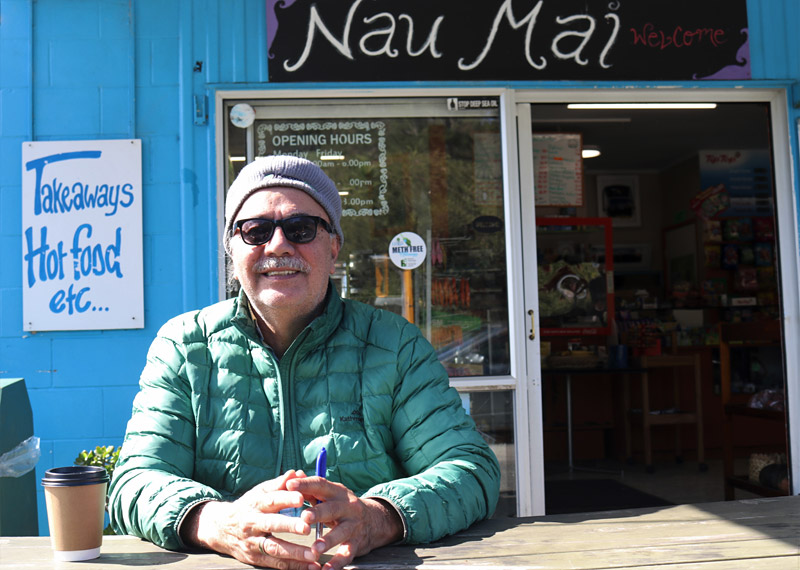
The closure also means some cultural sites are inaccessible.
“We usually go up the gorge for our special water and rongoā [traditional medicine], for bathing and healing. For us, it’s about having that intergenerational connection and doing what our ancestors did. That’s a lot more difficult now.”
However, for all the extra hassle and costs, there are also advantages.
“There are beautiful things about the closure. We can hear ourselves talk and think without big trucks roaring past. We quite enjoy that really. And kids are safe on the road. We’re back to being a nice little insular community.”
‘Dead as a doornail’
Mangamuka Dairy is a vital social and commercial hub on the southern side of the gorge.
It’s where locals call in for basic supplies, a kōrero [chat] and the latest news. In normal times it’s also a popular takeaway stop for passing travellers.
When I call in, the usually busy road is eerily, and agreeably, still. The only sound beyond the barking of dogs is the natter of conversation from locals gathered around a picnic table in front of the shop.
Store owner Eliza Chapman-Kete says the closure has had a significant impact on the business.
“Some days are really busy. Other days it’s dead as a doornail. It will be a financial hit, and we’ll have to cut staff hours back by one day a week.”
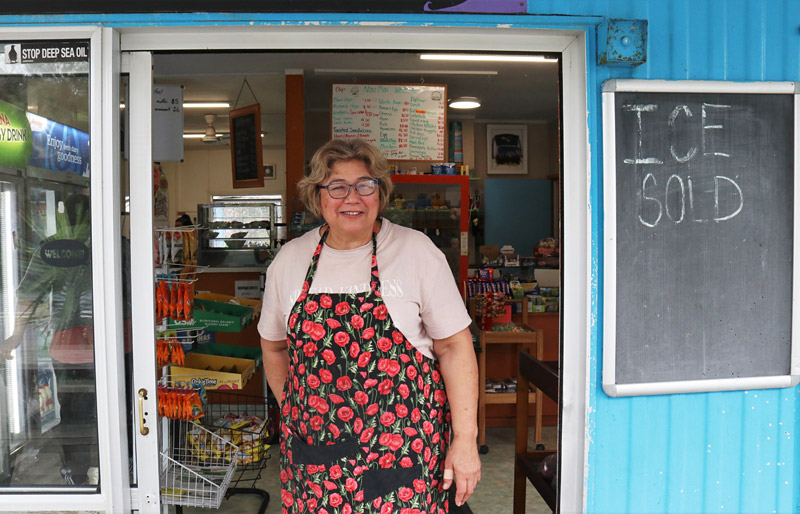
The closure of SH1 doesn’t just mean fewer customers, it also means more work. Delivery trucks used to stop at the store on their way to Kaitaia; now Chapman-Kete has to drive to Ōkaihau to pick up supplies.
“It’s very stressful to do that as well as running the shop.”
She also makes regular trips to Pak’nSave in Kaitaia but it’s now a long drive on a road pockmarked with potholes.
“Every day people ask us, when will the gorge be fixed? We’re not just the local dairy. We’re also the information centre and the directory service.”
A long way around
Mangamuka’s health clinic, one of 10 operated by local health provider Hauora Hokianga, is also affected.
When Kaitaia’s medical centres stopped taking new patients due to a shortage of GPs, many people north of the gorge enrolled at the Mangamuka clinic instead.
Kaimanaakitangata [support person] Betty Harris says those clients now face a long drive through Herekino, with some opting for phone consultations or appointments at the Broadwood clinic.
“There’s extra financial pressure on people because of the price of petrol and diesel. Plus a lot of people used to go to Kaitaia for shopping but now they go to Kaikohe and Kerikeri, where the supermarkets are more expensive.”

Mangamuka residents feeling the pinch include Terina Pihema, who drives regularly to Pamapuria, on the northern side of the gorge, to pick up her grandson.
“It used to take me 20 to 30 minutes. Now it takes at least an hour. Petrol isn’t cheap and buying a more economical vehicle isn’t an option. I’d guess it costs me an extra $50 a week.”
About a dozen Mangamuka residents work in Kaitaia at Pak’nSave, Archibald Motors, the butcher’s and the hospital.
Maurice Hovind says his wife, Edith, usually works at McDonald’s in Kaitaia, where she’s well-known to the burger-buying public.
“It’s a bummer. She’s liked by everybody there. She was lucky last time the gorge closed because she got another role in Kaikohe. This time she’s in Kerikeri so it’s a lot more driving,” Hovind says.
“If they repaired the road properly in the first place you wouldn’t have this all trouble. There’s not enough money for the North.”
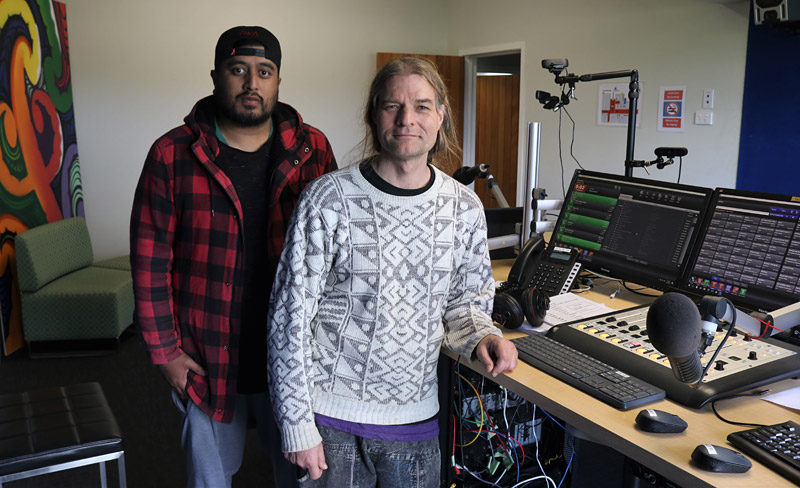
Like many Mangamuka residents, Tautoko FM technician Shanye Barber came home after a long stint in Auckland.
“I found growing up in the country helped me when I lived in the city. That’s something I wanted for my kids. But I also came back for the people. They make Mangamuka what it is.”
The gorge closure costs the young father both time and money.
“We normally shop in Kaitaia because it’s a lot cheaper than going to Kaikohe or Kerikeri. But now we have to weigh it up — do we spend more money on gas or more money on groceries?”
Most weeks, Barber takes his 7-year-old son to play basketball at a school near Awanui.
“Before it took me an hour and a half there and back, now it’s a three-hour round trip.”
Small town, big reputation
For a town of barely 500 people Mangamuka punches well above its weight.
It was the birthplace of New Zealand’s first advocacy group for the jobless — the Aotearoa Unemployed and Beneficiaries Collective, co-founded by Sue Bradford who later became a Green MP — and in 1989 locals successfully took on a mining giant to stop mineral prospecting on their sacred mountain, Maungataniwha.
Mangamuka has also made an outsized contribution to the revival of te reo Māori [the Māori language].
Founded in 1988, Tautoko FM is the second-oldest iwi radio station in the country. Its original base, two doors up from the dairy, burnt down in 2015. These days it broadcasts to the Far North from the old Mangamuka Hotel.
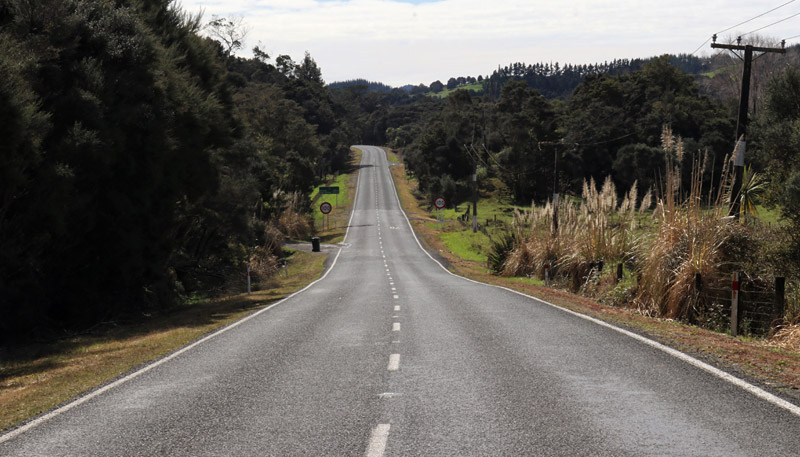
The town even boasts a global profile thanks to its location on the 3000km Te Araroa Trail.
It is the first civilisation, and in particular the first store, hikers encounter after a gruelling tramp through the Herekino and Raetea forests.
Pre-Covid about 2000 people walked Te Araroa each year, which Chapman says created opportunities for Mangamuka.
“They stayed overnight. They supported our shop. We could share our manaaki [hospitality]. A lot of them were from overseas so we could share our culture with them and reaffirm our place here,” he said.
“It’s about looking after people when they’re in your area. When the floods happened last month, Eliza had stranded people sleeping in her shop. If they were in their cars parked outside she brought them food. She’s become well known for her hospitality. That’s really important to us.”
‘Our culture was collapsing’
In the 1960s Mangamuka was “a buzzing little settlement” with three banks, a theatre, a drapery, a butchery, a farm store, a garage and an electrician.
All that had changed by the time Chapman came home in 1976. The demise accelerated as big-box stores sprang up in Kaitaia.
“Our language was dying. Our culture was collapsing. The young people had left and only the old remained.”
Chapman helped set up a community trust offering legal services and other support; Tautoko FM was part of his mission to rescue the language.
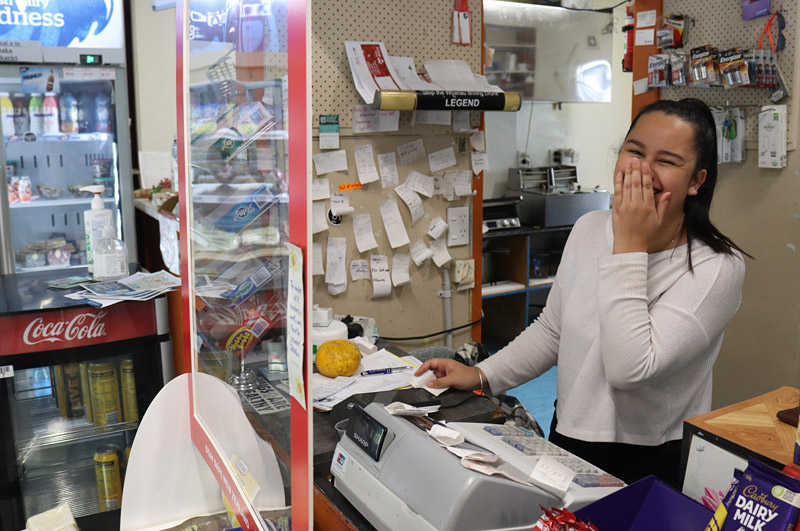
Now he’s working with Barber, the district council and Kaikohe design studio Ākau to create a community plan.
It includes proposals for a community centre, a youth hub, a health centre, a basketball court and a picnic area.
Chapman says it will be “a place to inspire our people”; Barber that it will fill a void for youth.
“It’s a small place, but we have lots of really exciting things happening here.”
‘It’s my road now’
Ten-year-old Riana Chapman lives next to the roadblock at the bottom of the gorge, where the only traffic now is the odd local resident or lost tourist.
Riana attended a kura [school] in Kaitaia until the 2020 slip closed the highway.
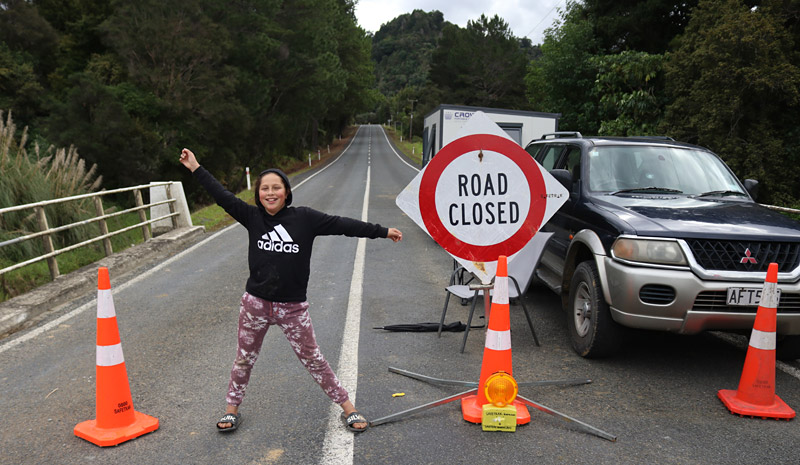
“It was too far to go right around and then come back home again. It was a real problem. Now I go to school at Te Kura Kaupapa Māori o Kaikohe,” she says.
“But I’m happy because I don’t wake up at 4 o’clock every morning because of the big trucks going past. It’s been really quiet. It’s easy to cross the road. I don’t have to wait and no one gets hurt. It’s my road now.”
First published in The Northern Advocate, September 17, 2022. See the original article.


